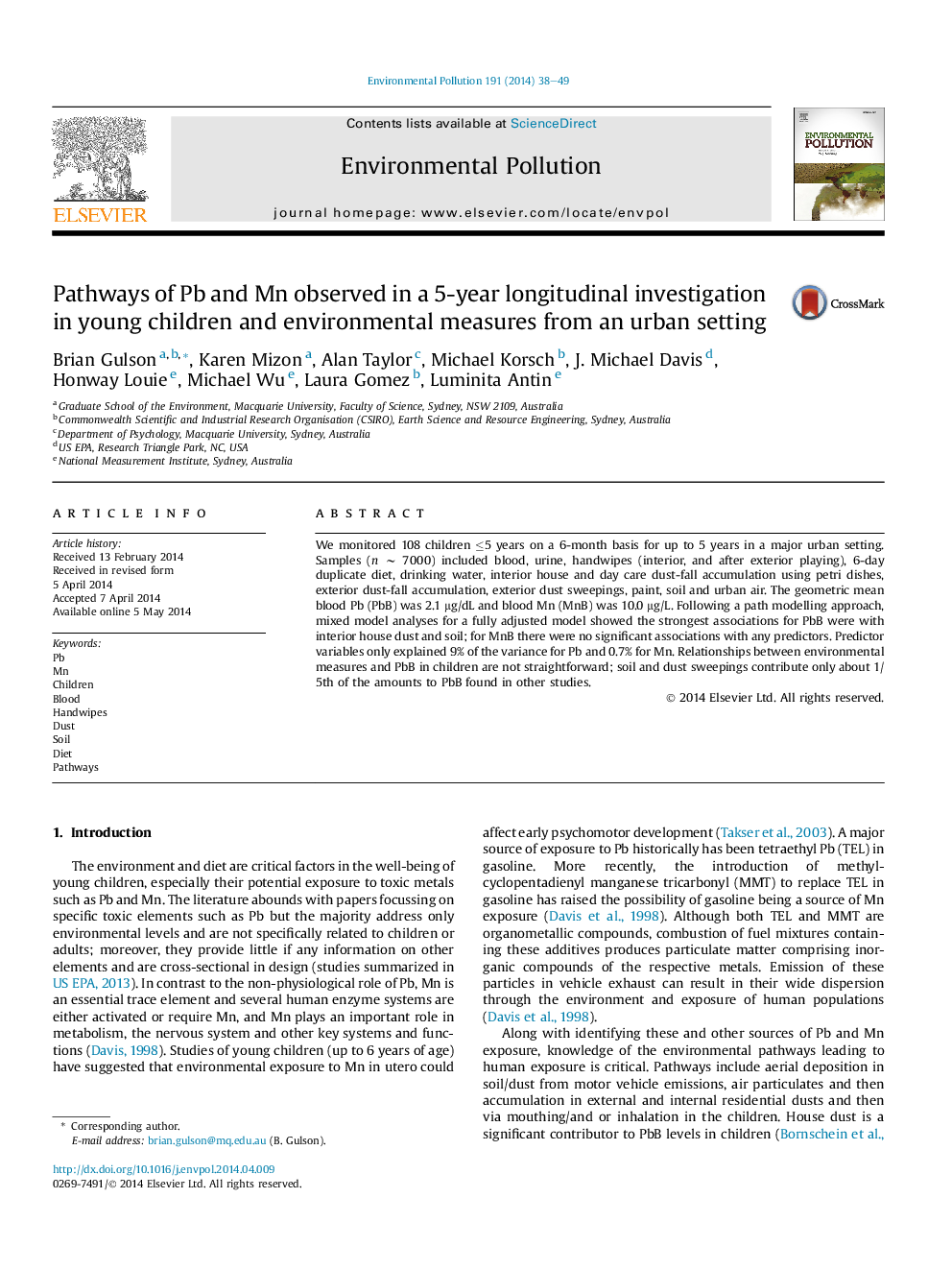| کد مقاله | کد نشریه | سال انتشار | مقاله انگلیسی | نسخه تمام متن |
|---|---|---|---|---|
| 4424425 | 1619181 | 2014 | 12 صفحه PDF | دانلود رایگان |

• 5-year longitudinal study of young children in urban setting.
• Samples analysed for Pb & Mn in blood and environmental samples.
• Modified structural equation modelling.
• Strongest associations for blood Pb with house dust & soil.
• Soil & dust contribute very small amounts to blood Pb.
We monitored 108 children ≤5 years on a 6-month basis for up to 5 years in a major urban setting. Samples (n ∼ 7000) included blood, urine, handwipes (interior, and after exterior playing), 6-day duplicate diet, drinking water, interior house and day care dust-fall accumulation using petri dishes, exterior dust-fall accumulation, exterior dust sweepings, paint, soil and urban air. The geometric mean blood Pb (PbB) was 2.1 μg/dL and blood Mn (MnB) was 10.0 μg/L. Following a path modelling approach, mixed model analyses for a fully adjusted model showed the strongest associations for PbB were with interior house dust and soil; for MnB there were no significant associations with any predictors. Predictor variables only explained 9% of the variance for Pb and 0.7% for Mn. Relationships between environmental measures and PbB in children are not straightforward; soil and dust sweepings contribute only about 1/5th of the amounts to PbB found in other studies.
Journal: Environmental Pollution - Volume 191, August 2014, Pages 38–49